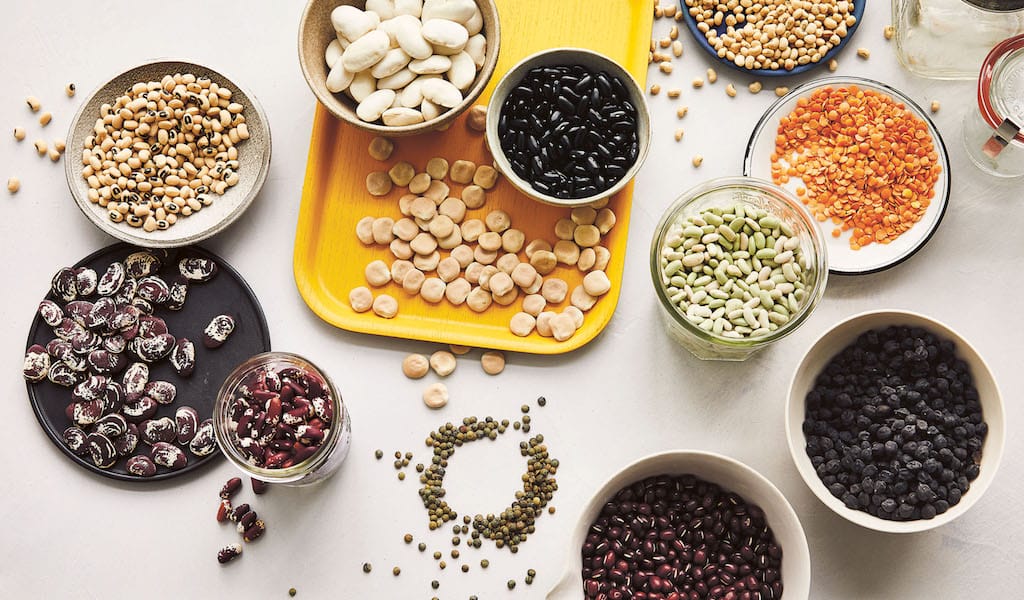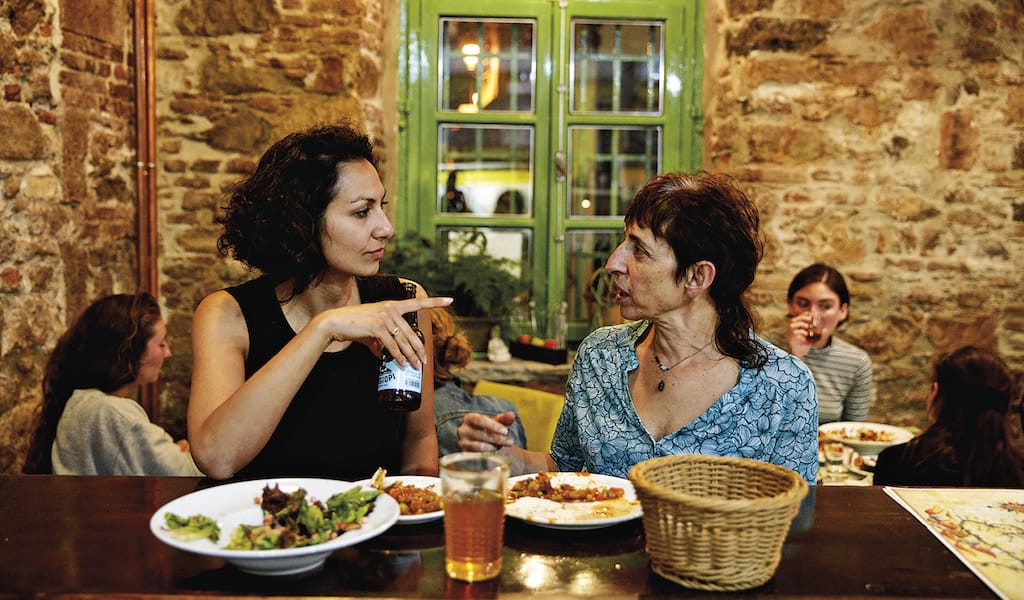We recently spoke to Joe Yonan, the James Beard Award-winning food and dining editor of The Washington Post, about his new cookbook, Cool Beans: The Ultimate Guide to the World’s Most Versatile Plant-Based Protein (Ten Speed Press, February 2020). He has written two other books for Ten Speed: Eat Your Vegetables: Bold Recipes for the Single Cook (2013) and Serve Yourself: Nightly Adventures in Cooking for One (2011).
The humble bean plays a starring role in many of the culinary cultures we cover, as evidenced by our “Bean Week” series, which included dispatches from Catalonia, Beijing, Mexico, Greece and Istanbul. So we were delighted to talk to Joe about this delicious, versatile and environmentally friendly protein, one that has gained new prominence in the current pandemic.
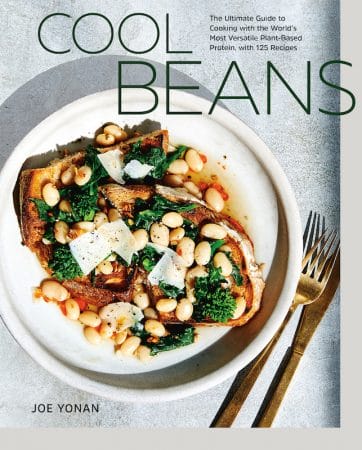 This must be quite a time to have a new cookbook out about beans – it’s very of the moment.
This must be quite a time to have a new cookbook out about beans – it’s very of the moment.
Yeah, it is. It was doing really well when it first came out, which was early February. I think because we found ourselves in this bean moment even before the pandemic, between a growing interest in plant-based cooking and the Instant Pot, really, and then [the heirloom bean company] Rancho Gordo – Rancho Gordo just keeps growing in popularity. So it was already doing really well thanks to those three things. And now we have a fourth – a global pandemic. People are quickly realizing that beans are such an important shelf-stable ingredient and are hoarding them all over the place. Now they’re wondering what to do with them.
Tell us more about the Instant Pot. Did it really make such a massive difference in terms of bean consumption?
Yeah, I think particularly before the pandemic. Now, though, we’ve all got time, and people are realizing that you can babysit a pot of beans. I mean, one of the best things about working from home for somebody who likes to cook is the ability to put something on and then go back to work for an hour or two, and then check back in on it.
So we’re not as much in that, “I can’t start anything until I get home from work” mindset. But before the pandemic – and certainly don’t get me wrong, a lot of people are still using their Instant Pots even now – but I think what really happened before was people were realizing that a pot of beans didn’t need to be something that they had planned out the night before.
They could come home from work and put them in the Instant Pot, and under an hour they could have a great batch of beans. It took a lot of the mystery out of dry beans. And this feeling that if you wanted to make beans from dry [beans], you were already behind. Sort of like, if you want to make an avocado dish and you haven’t bought your avocado three days earlier and let it finally ripen, you’re out of luck. I’ve heard from a lot of people about that.
We want to go back to talk about Rancho Gordo a bit later, but to start, why a cookbook about beans? What made you first fall in love with them?
I’ve been thinking about this book for about five years, and really started knowing that I wanted to do it in 2016, when the United Nations declared the International Year of Pulses. I knew all of these various things about beans in the back of my head, but that was the first time I had seen anyone articulate in one place all of the benefits of pulses – as a crop, being something that is good for the soil; as a really affordable source of protein and nutrition that can help feed a growing planet; and then, of course, their versatility.
I was already such a fan and I’ve been eating a primarily plant-based diet for eight years now – longer really, but I made it official in 2012 that I was vegetarian. I mean I’ve always been eating beans, since I was a kid in West Texas, and always loved them. But it wasn’t until I was really thinking about vegetarian cooking that I realized all the different ways in which I could enjoy beans.
So I started treating them as more than either a side dish or a soup or stew. I started realizing they were so good in all different parts of the meal and that they’re so flexible and easy to slip into a lot of dishes.
It was after the UN designation that I started thinking: I really, really need to do this now. It takes me a long time to do things because I have a really busy full-time job. Obviously, in a way, I’m glad that I didn’t do it in 2016 because I think that beans wouldn’t have been bubbling up to the surface. I don’t think we would have quite been ready for it even where we were before the pandemic. And of course I had no idea that we were going to need this pantry sustenance in quite the way that we do now.
You wrote in the introduction to the book that beans haven’t been as wildly popular in the U.S. as they should have been. So why do you think, before all of these factors bubbled up, that beans weren’t very popular in the States?
I think that it has something to do in the U.S. with this association [of beans] with hippies and health food and a sort of stodgy approach to plant-based eating. I actually love all those foods myself and some of my best friends are hippies. And I really admire so many of the things that movement did for the way that we eat. But overall, I think that it felt like they were in the past somehow, like they didn’t seem modern – they seemed stodgy.
There’s also this association with poverty, which I think is actually a great strength of beans, right? That they’re both such an incredibly affordable source of plant-based nutrition and shelf stable – it’s crazy when you think about it.
In terms of culinary trends, we’ve so often paid attention to higher-end cooking and maybe not as much to rustic cooking. Now there are some exceptions, and I think that those exceptions have been getting more and more frequent. People are realizing that the Italians, for instance, know how to make delicious food out of very little – like the whole cucina povera movement in Italy, which is very centered on beans. And then there has been more attention paid to the cuisine – cuisines, I should say, plural – of Mexico. And India. These are vast nations that have a huge diversity of cuisines within the country, and yet their bean dishes are beloved all over each of those cultures. As immigrants have played a more and more important part in American culture and people are paying attention to them, and certainly the culinary culture, that’s where things also started to change. People are realizing that beans don’t have to just be an obligation – they can be the foundation of something really delicious.
 Let’s go back to Rancho Gordo – a fair number of our readers are probably already familiar with the company, but can you talk a little bit more about Rancho Gordo and owner Steve Sando? What’s so special about his beans?
Let’s go back to Rancho Gordo – a fair number of our readers are probably already familiar with the company, but can you talk a little bit more about Rancho Gordo and owner Steve Sando? What’s so special about his beans?
The Post was one of the first, maybe even the first mainstream large publication that wrote about him, around 10 or 11 years ago, and it was right after Thomas Keller had discovered Rancho Gordo beans and put them on the French Laundry menu and named the beans – at that point, people started paying more attention to [Rancho Gordo].
The first time I had them – and so many other people have certainly had the same experience – they were revelatory. They’re not as old as most beans that you get. So they were dried usually within the last year, which makes a huge difference in how quickly they cook up and how evenly they cook up. [Steve] also grows and sells these varieties of beans that you really don’t see all that much anymore – some of them we’ve never seen in the United States before.
He works with farmers in Mexico to grow these really specific, beautiful heirloom varieties. And what you realize when you taste some of those beans is that there are some differences between beans that you hadn’t quite realized, some of them more subtle than others.
I mean, everybody knows about the difference between a chickpea and a black bean and a kidney bean and a white bean, you know? But when you start getting into the world of those heirloom beans with Rancho Gordo, you’re like, “Oh, this Christmas Lima bean is the most beautiful bean I’ve ever seen.” It has these incredible markings that actually stay when you cook it, it gets really plump and it’s kind of got this nutty flavor to it. Rancho Gordo got people to start learning about more bean varieties, and then falling in love with them.
The other thing that you realize when you make [Rancho Gordo’s beans] is that they don’t need anything. You can cook them very simply and you can taste the beans – they just have these delicious flavors. Some are a little nuttier than others. Some are a little starchier. Some are creamier.
As you know, Rancho Gordo has been inundated with orders. Are there any other heirloom bean retailers you can recommend? Alternatively, when you’re buying beans in the grocery store, is there anything to be on the lookout for?
The hardest part about buying beans in supermarkets is that you often don’t know how old they are. If I’m in a supermarket that I know well and where I’m confident they go through the bean stash fairly regularly, I might buy beans out of a bulk bin. But usually I don’t – you never really know how long those beans have been sitting there. So in the supermarket I often buy Goya’s dry beans. They specialize in Latin American products, and their audience really goes through a lot of beans, so they’re usually a very dependable choice.
There are some other really great heirloom bean companies out there. I particularly like one out of Idaho called Zürsun. Timeless Natural Food specializes in lentils – they have really beautiful lentils. I also like Camellia, which specializes in beans that are popular in American Southern cooking – red beans, black-eyed peas, cowpeas, crowder peas.
Internationally, La Tienda is very good. It’s based in Virginia and specializes in Spanish imports. And for Italian products, I often order from Gustiamo, which sells beautiful Italian beans. I also really like Kalustyan’s, which is a fabulous import company with a store in New York City and a great website – they have beans from all over the world. I like this chain of Indian groceries in America called Patel Brothers.
Before we sign off, in your opinion, which bean is the most underrated in the U.S.?
The cranberry bean, also known as the borlotti bean. You can buy them here as cranberry beans, but they’re also sometimes labeled as borlotti beans in Italian markets. It’s an amazing bean, one that I love it, and I don’t feel like people here know it very well.
It’s so plump and gets so creamy – it’s just delicious. I use it in several places in the book, but I used it in one Mexican treatment in particular, because in Mexico it’s called cacahuate bean, which means peanut in Spanish because it kind of looks like a peanut. In the front of the book, I write about this revelatory pot of beans that I had in Mexico City, and they were cacahuate beans. And while I was eating this incredible pot of beans, I was thinking to myself, “How am I going to replicate this when I get back home and [the chef] sends me the recipe?” He had said he gets them from this little village in Mexico, so I was already thinking about what I could substitute for these obscure cacahuate beans. It kind of reminded me of a cranberry bean, so I thought I’d try that when I got home. And then I got home and started Googling around and I was like, “Oh, it’s the same thing.”
That was another reason to love this bean. I mean, I certainly knew them before I worked on this book, but that’s the one that came out of the book process for me as being just a really great, all-around fabulous bean. The chickpea has a special place in my heart, because I think it might possibly be the most versatile bean of any – that’s my desert island bean. And then there are some really glamorous beans. But when I think of underrated, I think of the cranberry bean. It’s not as easy to find in a supermarket as a pinto bean, but it’s also not super obscure – Bob’s Red Mill, for example, sells really nice cranberry beans.
This interview has been edited and condensed.
Click here to purchase your copy of “Cool Beans: The Ultimate Guide to the World’s Most Versatile Plant-Based Protein” (Ten Speed Press, February 2020), which features 125 fresh, modern recipes for globally inspired vegetarian mains, snacks, soups, and desserts.
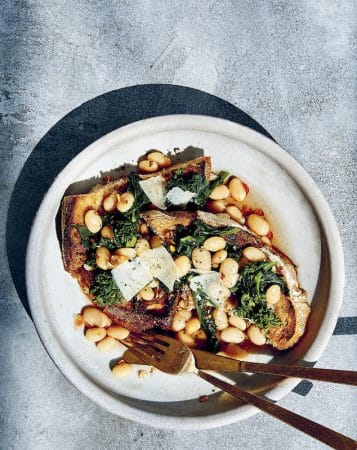 Recipe: Garlicky Great Northern Beans and Broccoli Rabe Over Toast
Recipe: Garlicky Great Northern Beans and Broccoli Rabe Over Toast
6 servings
My take on Heartland author and chef Lenny Russo’s wonderfully satisfying bowl of beans and bitter greens amps up the garlic and uses the rich bean cooking liquid instead of stock. I love serving these beans over toast to make it a meal.
2 cups dried great Northern beans (may substitute navy, cannellini, or other white beans), soaked overnight and drained
Water
1 onion, studded with 12 whole cloves
2 large carrots
1 (3 by 5-inch) strip kombu (dried seaweed)
3 bay leaves
3 tablespoons extra-virgin olive oil
1 large bunch of broccoli rabe, cut into 1-inch pieces
6 garlic cloves, finely chopped
1 teaspoon kosher salt, plus more to taste
1/4 teaspoon freshly ground black pepper
6 thick slices rustic sourdough bread, lightly toasted
1 tablespoon chile oil (optional)
1/4 cup vegan or traditional Parmesan, grated or shaved
Combine the beans in a large pot with enough water to cover by 2 inches. Add the onion, carrots, kombu, and bay leaves, turn the heat to medium-high, and bring the beans to a boil. Let then boil for 5 minutes, then reduce the heat so the beans are at a bare simmer, cover, and cook until the beans are very tender, about 1 hour. (Alternatively, you can cook the beans, water, and aromatic vegetables in a stovetop or electric pressure cooker: Bring to high pressure and cook for 17 minutes if using a stovetop model or 20 minutes for electric. Let the pressure release naturally, then open.)
Discard the onion, carrots, kombu, and bay leaves and strain the beans, reserving all of the cooking liquid.
In a deep skillet, heat the olive oil over medium heat until it shimmers. Stir in the broccoli rabe and sauté until very tender, about 8 minutes. Stir in the garlic and cook until it starts to soften, about 2 minutes. Stir in the drained beans, 1 1/2 cups of the reserved cooking liquid, and the salt. Cook just until the beans are hot and the flavors have melded, 2 to 3 minutes. Stir in the pepper, taste, and add more salt if needed.
Divide the toast among shallow serving bowls. Drizzle with the chile oil, if desired, and spoon the bean mixture and broth on top. Finish with the Parm and serve hot.
Reprinted with permission from “Cool Beans: The Ultimate Guide to Cooking with the World’s Most Versatile Plant-Based Protein, with 125 Recipes” by Joe Yonan, copyright © 2020. Published by Ten Speed Press, an imprint of Penguin Random House.
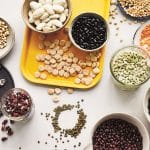 March 3, 2022 Recipe
March 3, 2022 Recipe
We spoke to Joe Yonan, the James Beard Award-winning food and dining editor of The […] Posted in Mexico City May 4, 2021 CB Book Club
May 4, 2021 CB Book Club
We spoke to travel writer and cook Yasmin Khan about her latest cookbook, Ripe Figs: […] Posted in Athens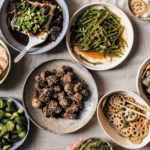 March 16, 2021 CB Book Club
March 16, 2021 CB Book Club
We recently spoke to Betty Liu about her new cookbook, My Shanghai (Harper Design, March […] Posted in Shanghai
Published on April 16, 2020
Related stories
March 3, 2022
Mexico City | By Culinary Backstreets
Mexico CityWe spoke to Joe Yonan, the James Beard Award-winning food and dining editor of The Washington Post, about his cookbook, Cool Beans: The Ultimate Guide to the World's Most Versatile Plant-Based Protein (Ten Speed Press, February 2020). And he provided us with a recipe for his garlicky great northern beans and broccoli rabe over toast (scroll…
May 4, 2021
Athens | By Culinary Backstreets
AthensWe spoke to travel writer and cook Yasmin Khan about her latest cookbook, Ripe Figs: Recipes and Stories from Turkey, Greece, and Cyprus (W. W. Norton & Company, May 4, 2021). Author of two cookbooks, The Saffron Tales and Zaitoun, Yasmin turns her focus to the Eastern Mediterranean in Ripe Figs. Using the kitchen table…
March 16, 2021
Shanghai | By Culinary Backstreets
ShanghaiWe recently spoke to Betty Liu about her new cookbook, My Shanghai (Harper Design, March 2021), which spotlights the home-style Shanghainese food she grew up eating. Organized by season, this handsome volume takes readers through a year in the Shanghai culinary calendar, with flavorful, deeply personal recipes that are daily fare for Betty and her…







































